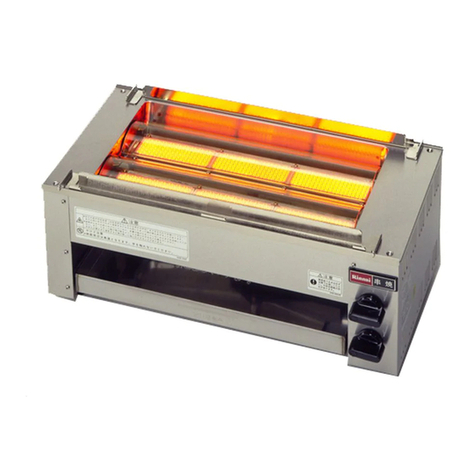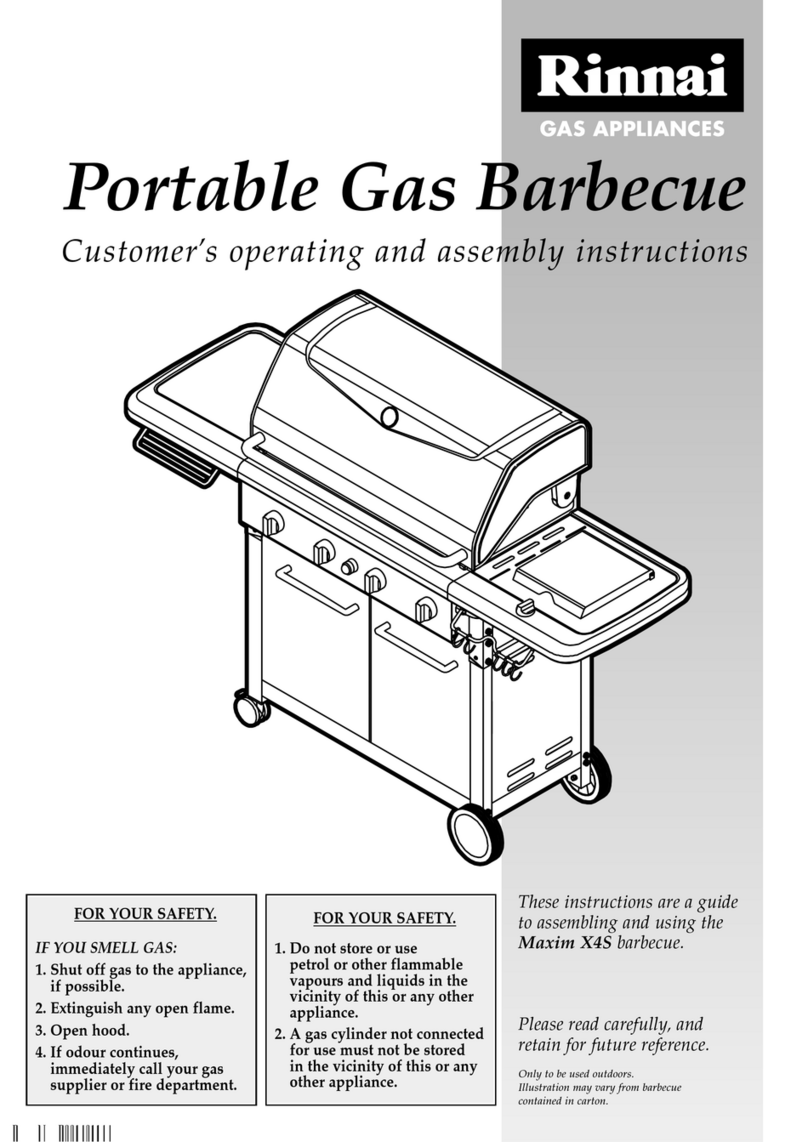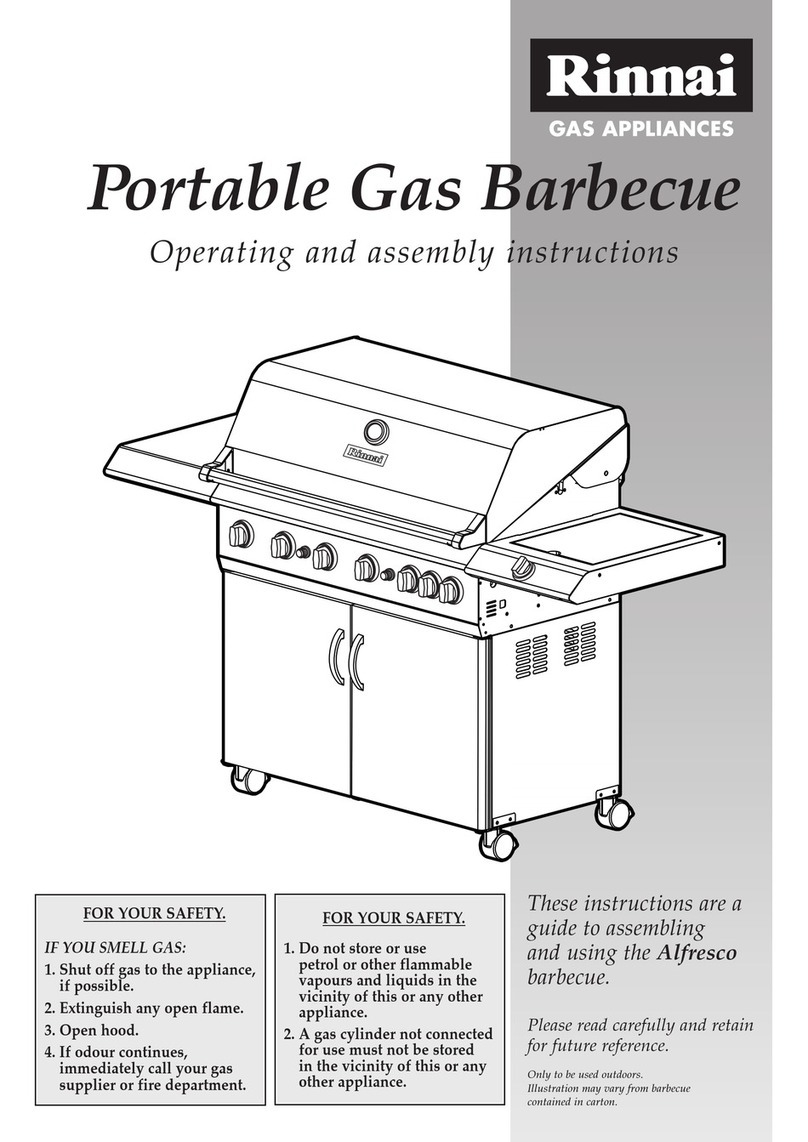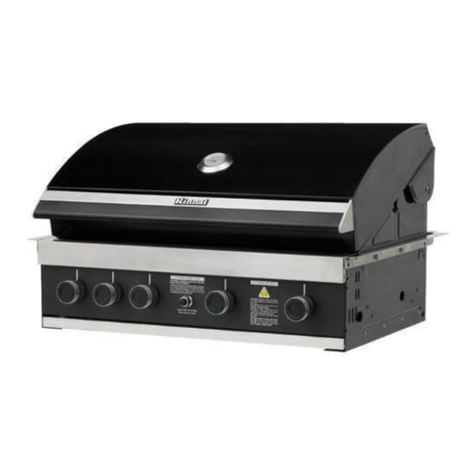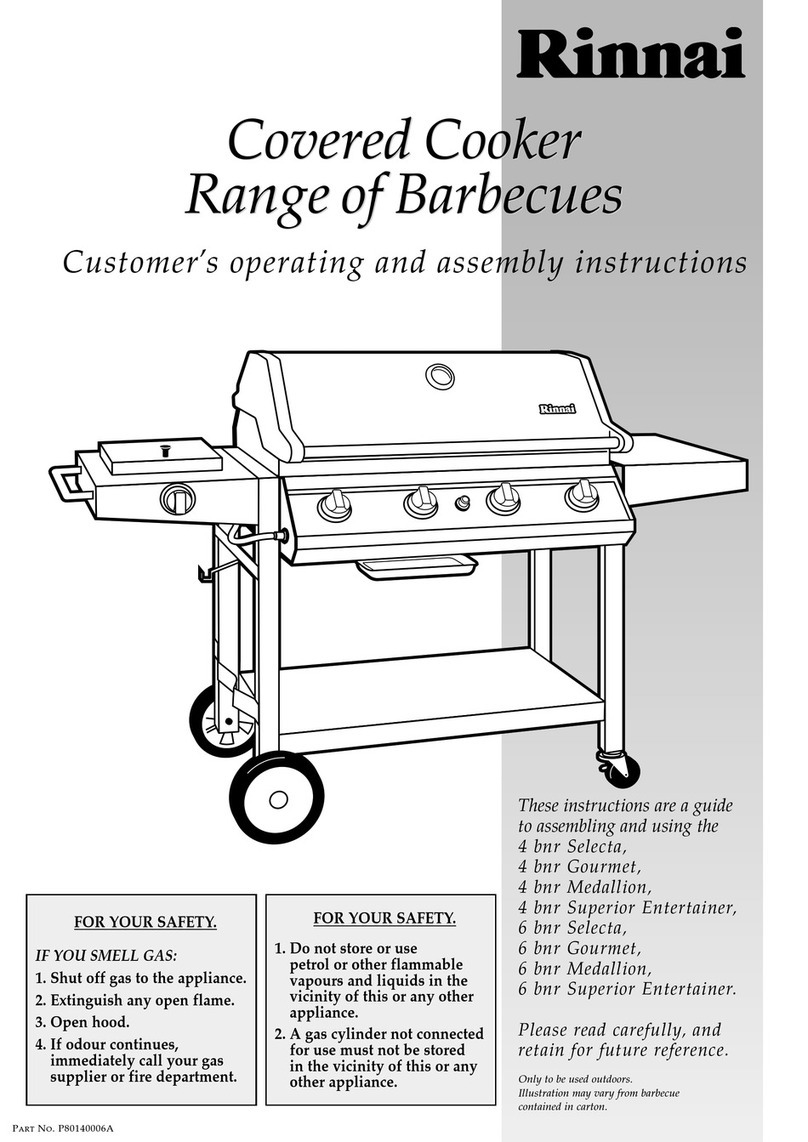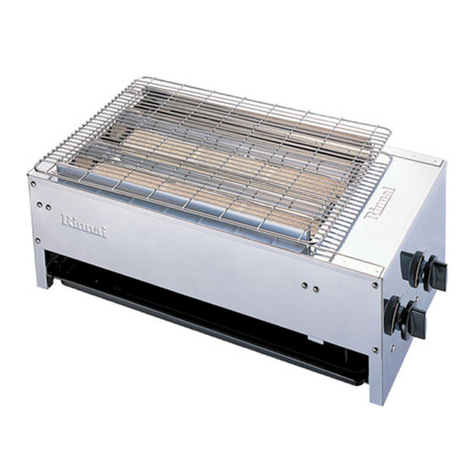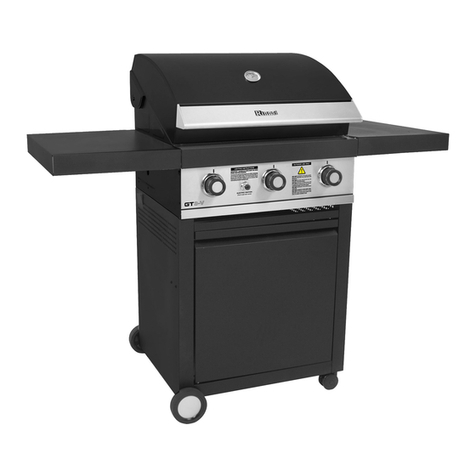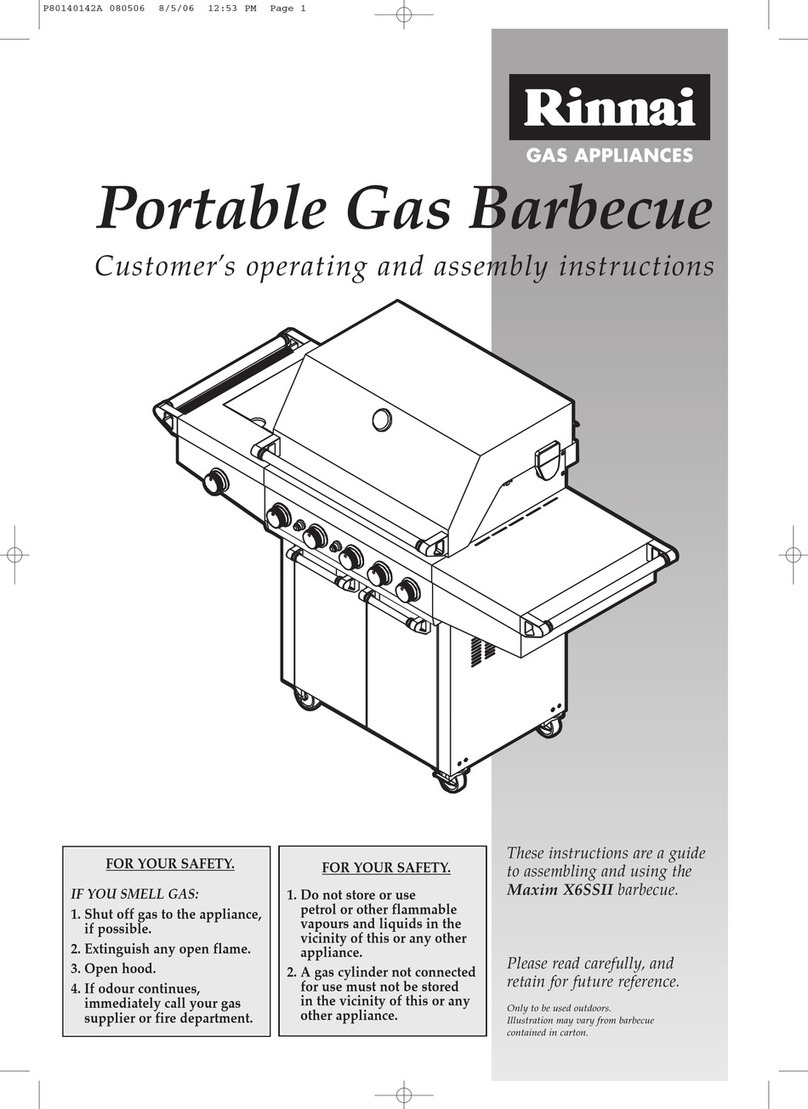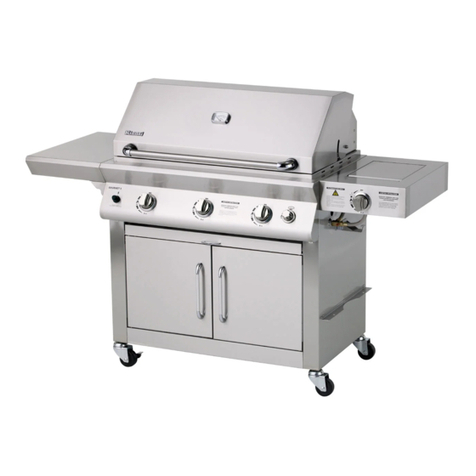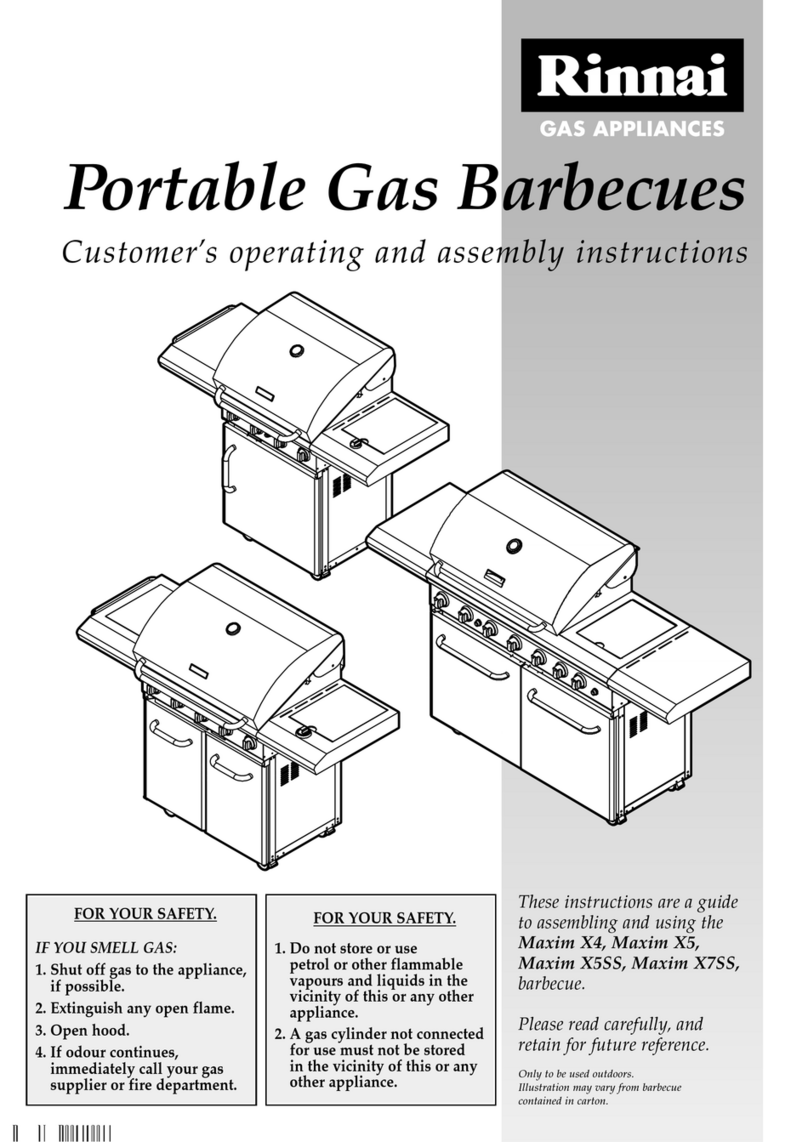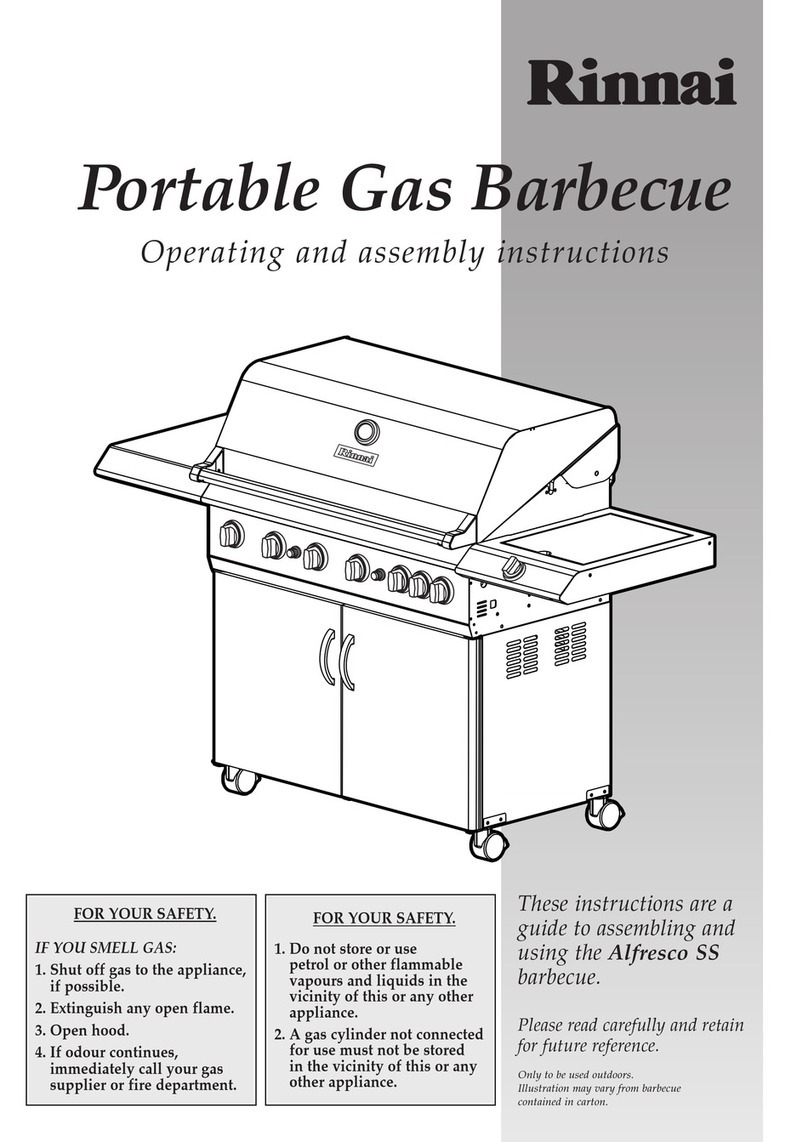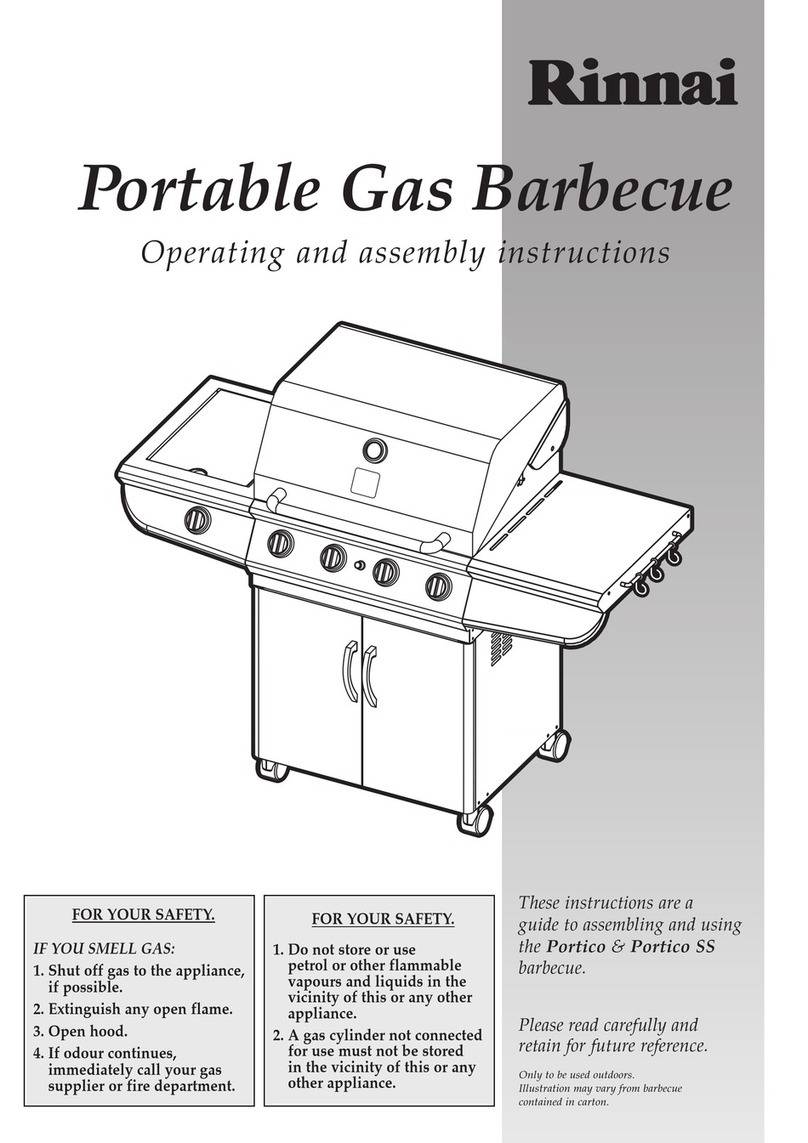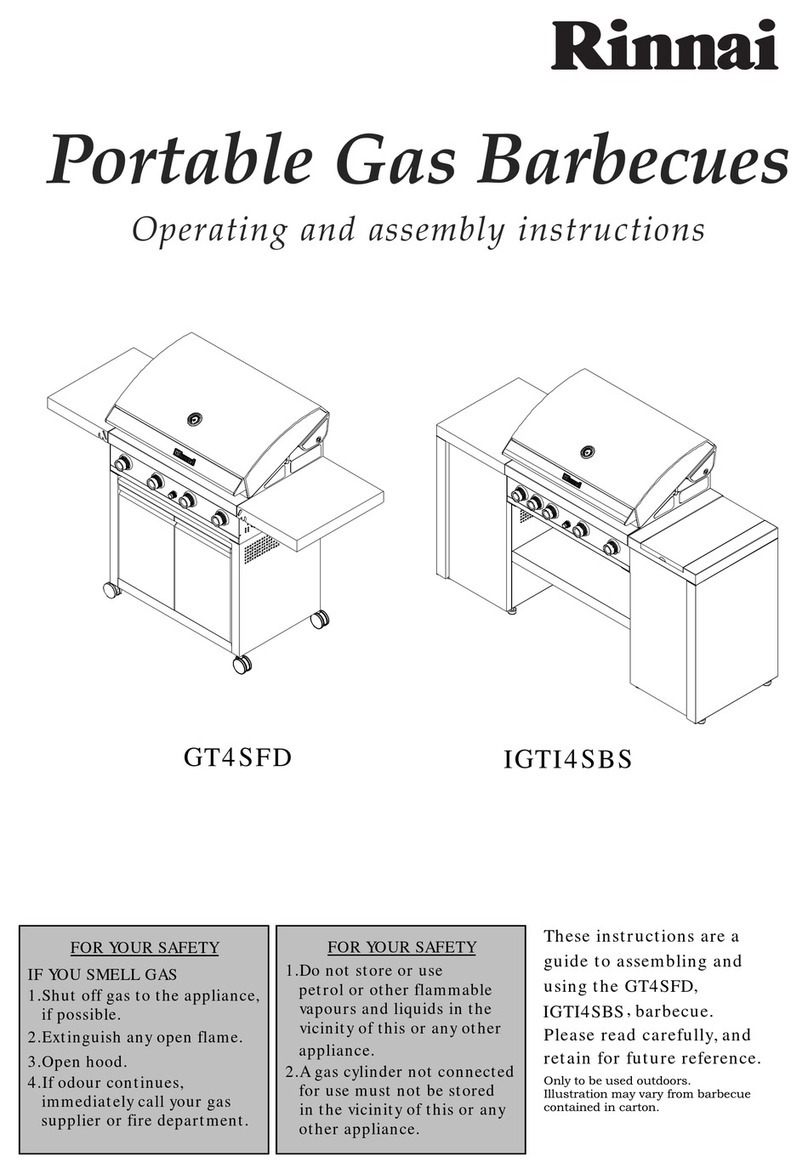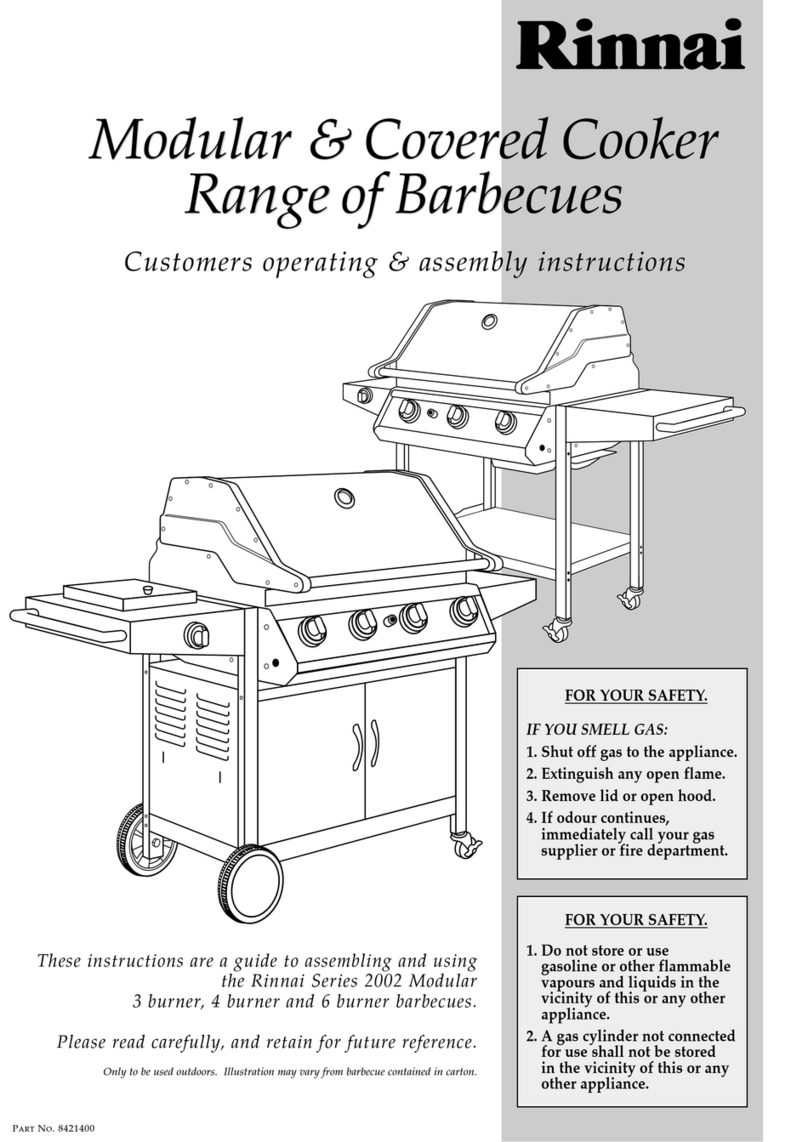MAINTENANCE
20 20
To reduce the chance of flash-back, the procedure
below should be followed at least once a month in late
summer or early autumn when spiders are most
active, or when your barbecue has not been used for
an extended period of time.
1. Remove grillplates, flametamers, fat/grease
draining tray and receptacle from barbecue.
2. Remove burners from bottom of barbecue body
by pulling cotter pin from beneath burner ‘foot’
using a screwdriver or needle nose pliers.
3. Carefully lift each burner up and away from gas
valve orifice.
We suggest several different ways of cleaning the
burner tubes. Use the procedure most convenient for
you:
1. Bend a stiff wire (a light weight coat hanger works
well) into a small hook. Run the hook through
each burner tube and into the burner several
times.
CLEANING THE BURNER TUBES AND
BURNER PORTS (TO PREVENT FLASH-BACK)
OR Using a narrow bottle brush with a flexible handle
(do not use a brass wire brush), run the brush
through each burner tube and into the burner
several times.
OR Use an air hose to force air through the burner
tube and out through the burner ports. Observe
each port and make sure air comes out every
hole. Wear eye protection.
NOTE: Do not use compressed air on the injectors.
Regardless of which burner cleaning procedure
you use, we recommend that you complete the following
steps to help prolong burner life.
1. Wire brush entire outer surface of burner to
remove food residue and dirt.
2. Clean any blocked ports with a stiff wire such as
an open paper clip.
3. Inspect the burner for damage (cracks or holes)
and if such damage is found, order and install a
new burner. After installation, check to ensure
that gas valve orifices are correctly placed inside
ends of burner tubes. Also check position of
spark electrode.
If fire occurs in and around the burner tubes, immediately
turn off gas at its source and turn the burner control(s)
to ‘OFF’. Wait until the barbecue has cooled, then clean
the burner tubes and burner ports as described below.
FLASH-BACK
As with all appliances, proper care and maintenance
will keep them in top operating condition and prolong
their life. Your new gas barbecue is no exception. By
following these cleaning procedures on a timely basis,
your barbecue will be kept clean and working properly
with minimum effort.
CARE AND MAINTENANCE
Rotate the chrome cap anti-
clockwise to remove it
completely. The ignition pack
is powered by a ‘AA’battery.
The battery can be easily
removed using your fingers.
IGNITION SYSTEM BATTERY REPLACEMENT
Washing the flametamer after every use is not necessary
but periodically it is suggested you wash the
flametamer in a mild soap and warm water solution.
Use a wire brush to remove stubborn burnt on cooking
residue. Dry the flametamer thoroughly before you
re-install it in the barbecue body.
CLEANING THE FLAMETAMER
The fat/grease draining tray should be emptied and
wiped down periodically and washed in a mild detergent
and warm water solution.
CLEANING THE FAT/GREASE DRAINING TRAY
& FAT/GREASE RECEPTACLE
After cooking, turn burner controls to ‘OFF’and let
barbecue cool before attempting to clean cooking plates.
It is recommended that the cooking plates be coated
with a thin layer of vegetable oil on a regular basis to
reduce rusting. Slight rusting can be removed with a
scrubbing brush before use.
Before first use and periodically it is suggested that
you wash the cooking plates in a mild soap and warm
water solution. You can use a wash cloth, a vegetable
brush, or steel wool to clean barbecue plates if desired.
CLEANING THE COOKING PLATES




















